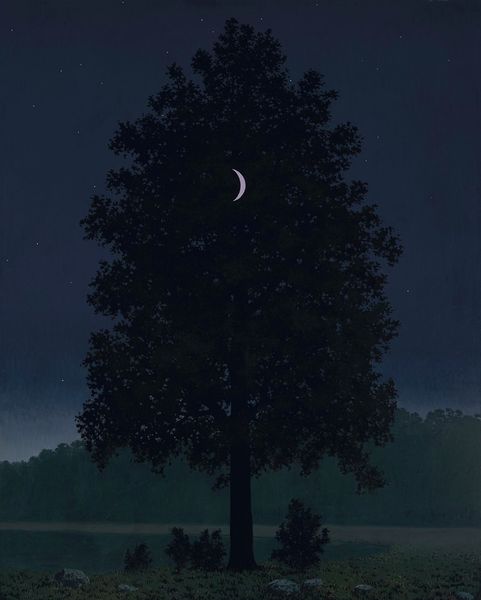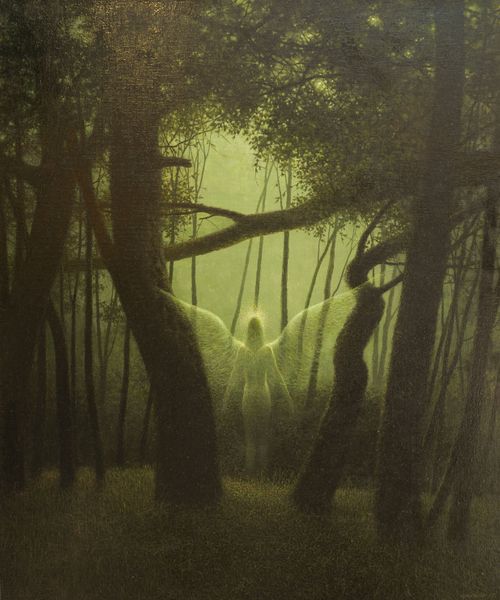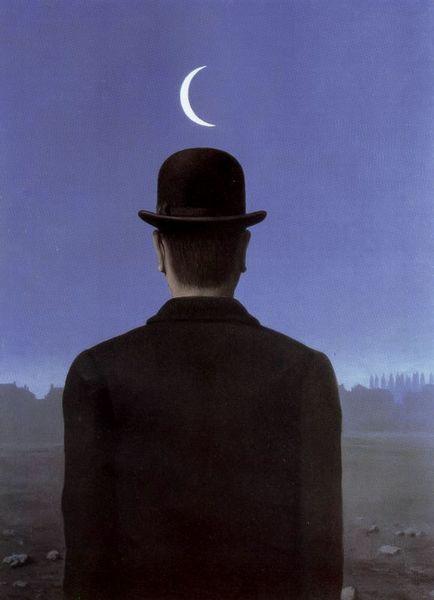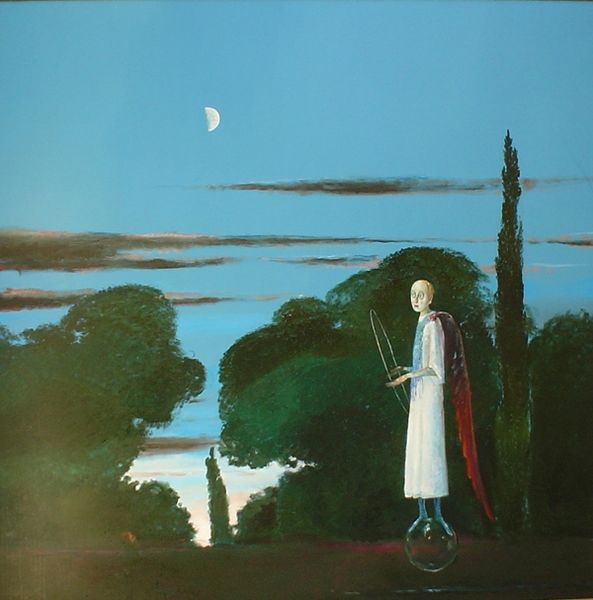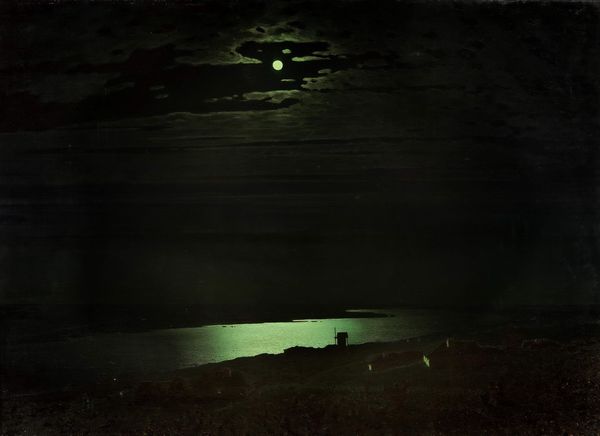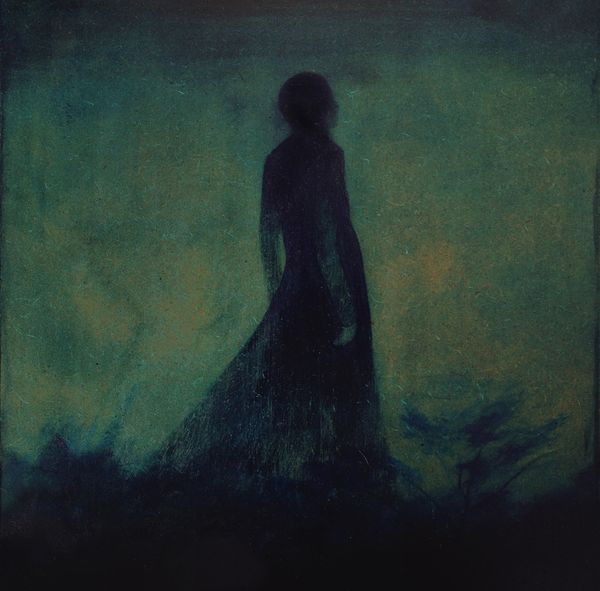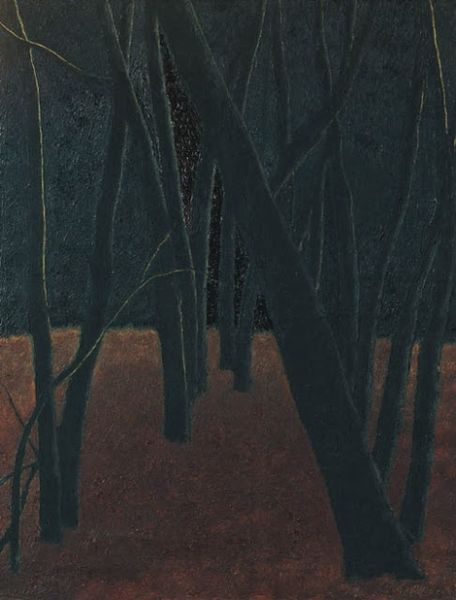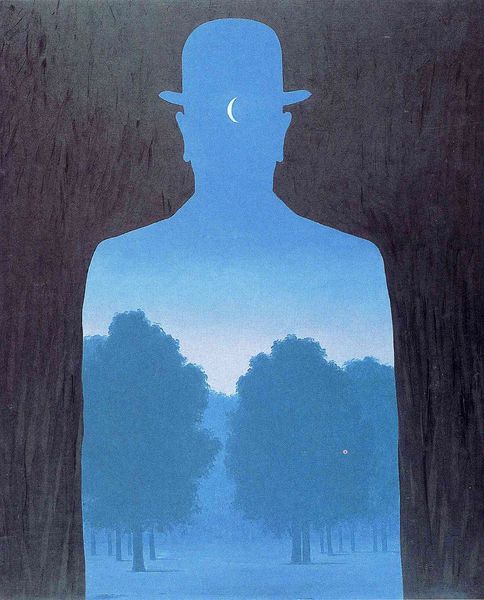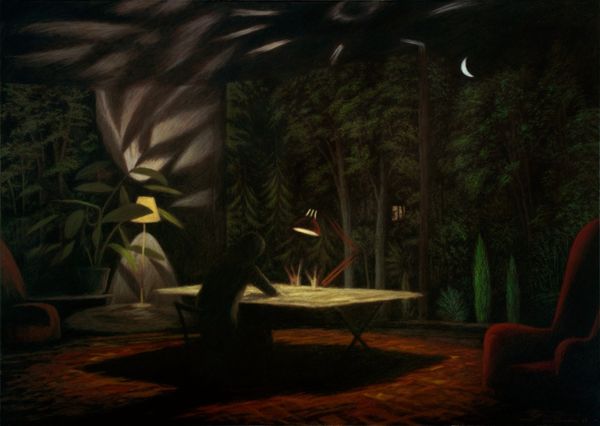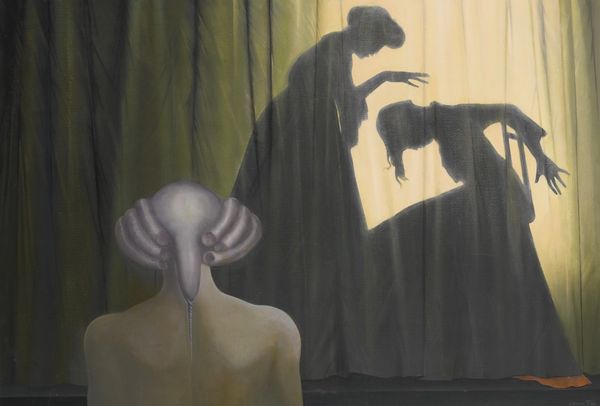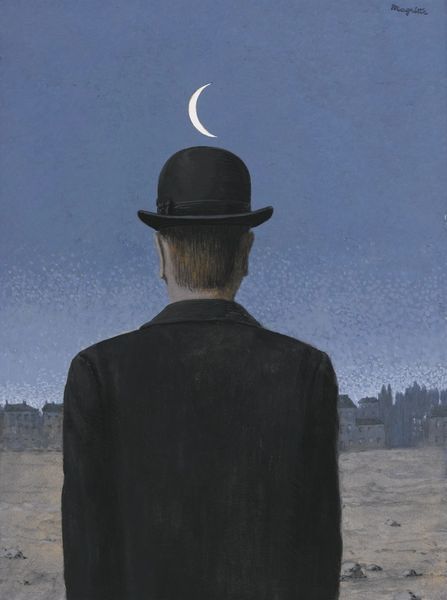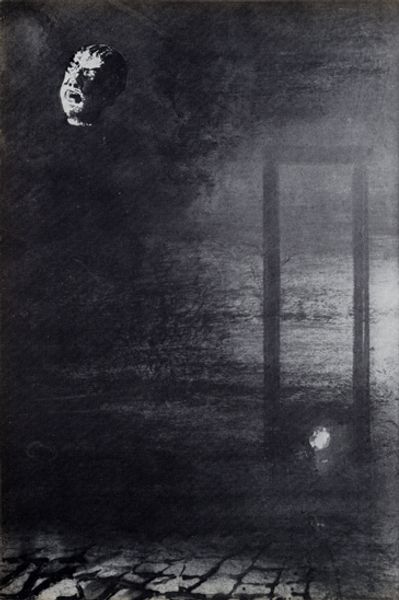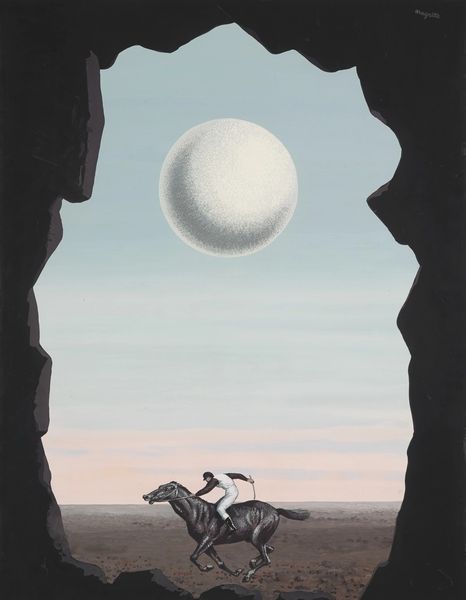
painting, oil-paint
#
portrait
#
painting
#
oil-paint
#
landscape
#
figuration
#
surrealism
#
realism
Copyright: Modern Artists: Artvee
Curator: This is René Magritte’s "A la rencontre du plaisir," or "Meeting of Pleasure," painted in 1962. Editor: A very somber pleasure it seems. I am immediately drawn to the stark contrast between light and shadow. The overall composition feels staged, theatrical, yet unsettling. Curator: It’s interesting that you mention theater. Magritte’s surrealist aesthetic often employs motifs like the stage curtain on the left. What might seem like an inviting vista is instead revealed as artificial. There's a real push and pull there. How can we read this figure as separate from the surrounding nature? Is he, too, artifice? Editor: Exactly. Look at the placement of the full moon, an obvious orb of light, juxtaposed against the faceless bowler-hatted man. Magritte plays with geometric shapes—circles, rectangles, lines—to create spatial ambiguity, which makes the eye linger and the mind question. The palette too. Shades of blacks, whites, with subdued reds gives the composition its character. Curator: This faceless figure—we could read them as the bourgeoise. We might interrogate how social norms and expectations, represented by this very symbol of a hat, obscure individual identity. Think of the pervasive pressure on individuals, particularly men, to conform, to perform masculinity in certain ways that deny inner emotionality or "pleasure". It presents us with something akin to emotional suppression. Editor: A compelling interpretation, indeed. The figure becomes a sign, devoid of inherent substance, defined entirely by its exterior presentation, which may well reflect its class, power or position. However, in itself, his work is an articulation of surface as both material and sign. How the dark shades that define the dress almost blend into its surroundings. Curator: I think you hit upon something important when you look to the exterior to look to power structures at play, the cultural and political backdrop that shaped Magritte’s exploration of identity and pleasure in the 20th century. How a landscape such as this could mirror a mindstate of restriction. Editor: Indeed. When closely decoded, this "pleasure" we speak of manifests as the convergence of material form and theoretical insight. Curator: This intersection unveils the rich narratives within the visual form. Thank you for that. Editor: My pleasure. I do see your point, too, with regard to a person's place in culture and identity.
Comments
No comments
Be the first to comment and join the conversation on the ultimate creative platform.
